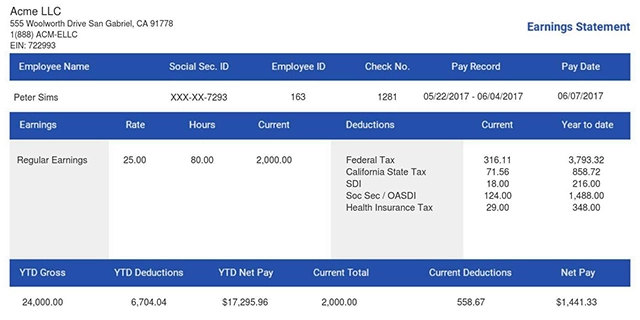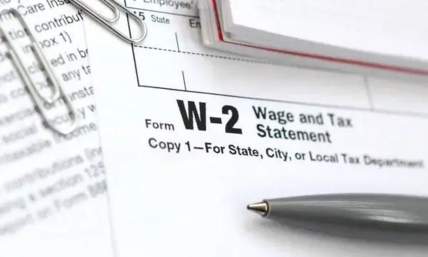Can the Qualified Business Income Deduction Help Your Business Save On Taxes?
Many business owners love the qualified business income deduction or Section 199A. With it, many small business owners have a helpful way to manage taxes.
But, both figuring out eligibility and correctly deducting the credit can be difficult. They need to know the income caps, unique industry rules, and many more.
Clearly, there are plenty of things to learn about this valuable tax benefit. And they have to do that before it ends in December 2025.
If your business structure is eligible, then this article is here to guide. We’ll join you in figuring out if you qualify for this deduction and how best to use it.
What Is the Qualified Business Income Deduction?
Thanks to Section 199A of the Internal Revenue Code, people who own pass-through businesses get relief. This includes certain other individuals. Due to this provision, they can deduct up to 20% of their qualified business income while filing taxes. The purpose of this deduction is to give tax relief to pass-through businesses. This means their income goes straight to their owners’ individual tax forms.
This qualified business income deduction is created with two main factors:
The QBI Component
This portion means you can deduct 20% of the qualified business income you earn. That's if it's through a sole proprietorship, partnership, S corporation, or some trusts and estates. In any qualified trade or business, QBI refers to the net amount of the items that are qualified. That means income, gain, deduction, and loss from such business or trade.
The REIT/PTP Component
This is for qualified real estate investment trusts (REITs) and qualified publicly traded partnerships (PTPs). It means 20% of the REIT/PTP income.
This deduction is very appealing because any eligible taxpayer can claim it on their main tax returns. That's even if they do or do not itemize deductions. Nonetheless, this deduction usually includes 20% of your business income. It could also be 20% of taxable income after your net capital gains have been taken out. It’s usually whichever one’s lesser.
Unless Congress acts, the qualified business income deduction will end on December 31, 2025. At the time the Tax Cuts and Jobs Act of 2017 passed, it made sure that this deduction would end in 2025.
Who Qualifies for the QBI Deduction?
Mainly, owners of pass-through entities benefit from the qualified business income deduction.
-
Sole proprietorships and independent contractors that put business income in their Schedule C.
-
Companies with two or more members that file Form 1065.
-
Any S corporation that sends Form 1120-S to the IRS.
-
There are specific trusts and estates.
Income from a C corporation or earned as an employee can’t be deducted for this purpose. If you own a rental property, you may need to check extra rules. The IRS has set clear guidelines for rental businesses that meet them to receive the deduction for qualified business income.
To determine if a business can benefit, most business owners look at their taxable income. They also check the structure of their business. You’ll usually qualify for the full 20% deduction if your income is less than the threshold. It is $191,950 for single filers or $383,900 for married filing jointly for 2024 tax returns.
People making higher incomes may be required to check if their business is a specified service trade or business (SSTB). Then, they must also look at the W-2 wages paid. Lastly, they'll check the original value they had in any qualified property they use.
Income Limitations and Phase-Out Thresholds
Those who earn more than the listed thresholds begin to miss out on the full advantage of the deduction.
If you file as a single person or as head of the household, your standard deduction is $191,950. This is also the case if you and your spouse choose to file separately. The amount for married filing jointly is $383,900.
Someone’s income may be over the threshold but doesn’t exceed $241,950. It may also not exceed $483,900 for a joint return. Then, the deduction is reduced using your W-2 wages and the original purchase cost of the assets.
Now, the amount for those businesses not in specified service trades or businesses (non-SSTBs) has a condition. The biggest of the two amounts is considered their deduction.
The first is half of the W-2 wages paid by a qualified trade or business.
The second is 25% of the W-2 wages. This is plus 2.5% of the unadjusted basis immediately after acquisition (UBIA) of their property that’s qualified.
It is the second calculation that is best for businesses with lots of property but not many people working there.
The phase-out of the deduction for specified service trades or businesses happens completely. That’s for those whose taxable income reaches $241,950 if single or $483,900 if joint in 2024. If their earnings surpass the high marks, those professionals won’t get any more benefits from the deductions. That’s people working in health, law, accounting, financial services, consulting, etc.
The deduction for non-SSTB may be limited after exceeding the thresholds. But then, you won’t see it fully disappear if your income keeps increasing. As a result, there is an incentive for high-earning service professionals. This is to see if they can separate parts of their business into SSTB and non-SSTB.
How To Calculate Your Qualified Business Income Deduction
Calculating your deduction for qualified business income goes through multiple steps:
-
Get Your QBI
To begin, work out your qualified business income. Do this by taking your business’s net income after you subtract allowable business expenses. The type of income considered here is from domestic business only. Capital gains, dividends, and income from other countries are omitted.
-
Calculate 20% of QBI
After that, determine 20% of your QBI. This is your possible deduction until limits are taken into account.
-
Determine Accurate Deductions
Check that your taxable income is less than the limits. If it is, the deduction is 20% of your QBI plus 20% of REIT dividends and PTP income. If your taxable income is more than these amounts, you’ll have to add limitations. That’s in relation to your W-2 wages and certain property.
Businesses besides these specified trades can only deduct the lesser of the two. It can be 20% of your QBI. Otherwise, it will be either half of W-2 wages or a quarter of the wages plus 25% of the UBIA. Whichever one’s larger.
How To Claim the QBI Deduction on Your Tax Return
If you want to claim the qualified business income deduction on your taxes, you’ll take some steps:
Form 8995
If your taxable income remains less than what's allowed, you'll use Form 8995. That's if you aren’t a member of an agricultural or horticultural cooperative.
Form 8995-A
Form 8995-A is if your income is higher than the threshold amount. It's also the right form if you have a share in an agricultural or horticultural cooperative. With this, you also use additional schedules for wages and property limits.
Enter Calculated Deduction
After filling out the appropriate form, you’ll note the figure. Then you'll record it for your tax deduction on line 13 of your Form 1040. The deduction decreases your income for tax purposes. But not your adjusted gross income. You can claim it whether you use itemized deductions or the standard deduction.
Consult Professional
The QBI deduction rules are so complex. So, it’s important to talk to a tax professional. This is more important if you operate many businesses. It's also a good idea if you earn income from rental properties. The same goes for if you work in a specified trade or business.
Final Comments
Simply put, the qualified business income deduction provides lots of savings for those who meet its requirements. That’s as long as careful planning and attention to small details are used. Pay attention to the basics listed in this article. Also, monitor updates in the law, especially since there’s a time limit. This will give your business a chance to benefit from this unique tax credit.
Maximize your tax savings with our pay stubs tool. Our platform helps business owners generate accurate pay stubs. This makes it easier to track earnings and claim deductions. Let’s help you stay tax-efficient today!














